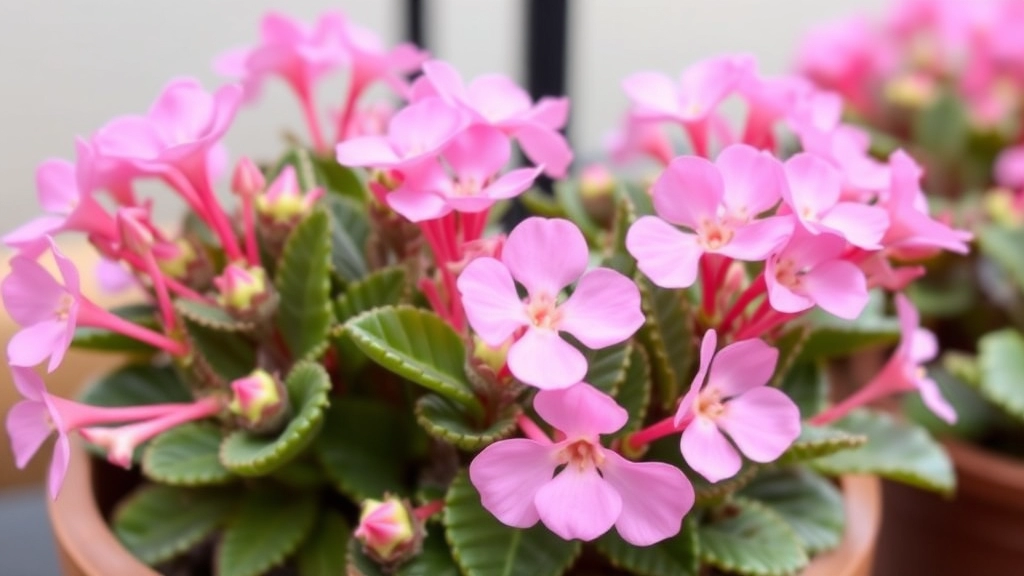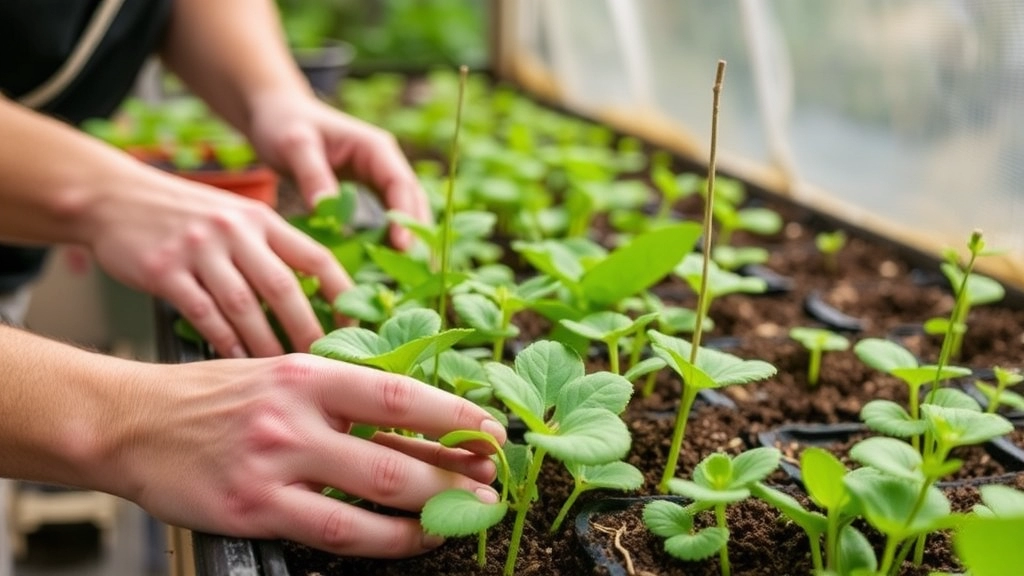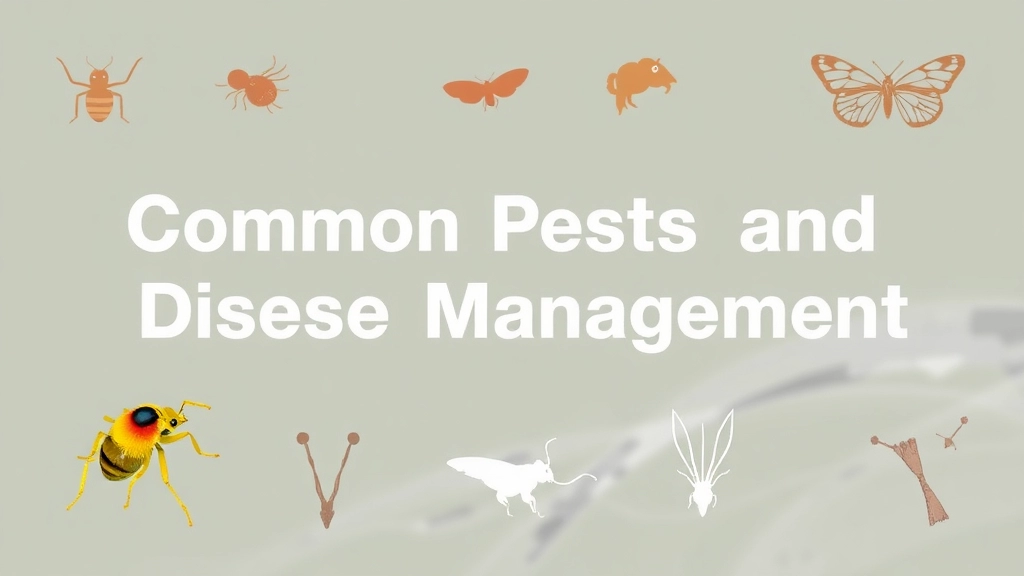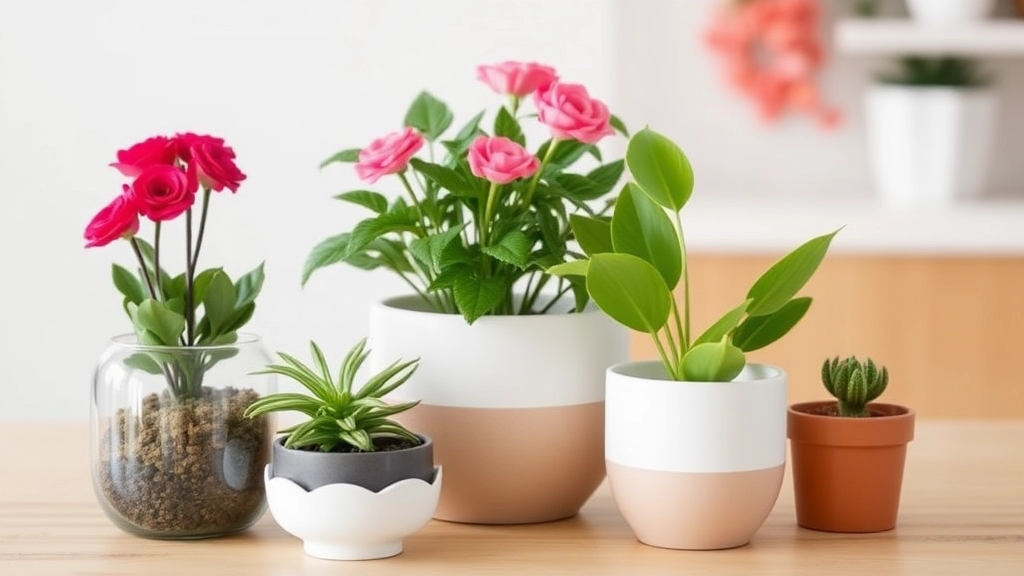Welcome, plant enthusiasts!
Today, we’re diving into the captivating world of the pink kalanchoe succulent, a true gem in the realm of indoor plants. This unique beauty, with its vibrant pink hues and butterfly-like leaves, is about to become your new favorite green companion.
What You’ll Learn
In this article, we’ll explore everything you need to know about caring for your pink kalanchoe succulent. From ideal growing conditions and propagation techniques to common challenges and safety concerns, we’ve got you covered. Get ready to transform your space with this low-maintenance yet stunning plant that’s sure to turn heads!
Overview of Kalanchoe ‘Pink Butterflies’
Alright, let’s dive into the world of Kalanchoe ‘Pink Butterflies’ – a plant that’s as cool as it sounds.
What’s the deal with this plant?
Kalanchoe ‘Pink Butterflies’ is a succulent that’s got some serious style. It’s part of the Crassulaceae family, which is just a fancy way of saying it’s related to jade plants and echeverias. But here’s the kicker – it’s not your typical green succulent. This bad boy sports leaves that are green at the base and fade to a vibrant pink at the tips. And those pink bits? They look like tiny butterflies perched on the plant. Hence the name. Pretty clever, right?
Why people are going nuts for it
Let’s be real – this plant is an attention-grabber. It’s like the rockstar of the succulent world. Here’s why folks can’t get enough:
- It’s unique: Not many plants can pull off the whole “I’ve got butterflies growing on me” look.
- Low maintenance: Perfect for those of us who aren’t exactly plant whisperers.
- Versatile: Works great indoors or outdoors, depending on where you live.
- Propagation is a breeze: You can easily make more of these beauties.
A bit of history
Kalanchoe ‘Pink Butterflies’ isn’t something you’d find in the wild. It’s a cultivar, which means some clever plant breeders created it. They took the Kalanchoe daigremontiana (also known as Mother of Thousands) and tweaked it to get this pink wonder.
Is it right for you?
If you’re into plants that:
- Look different
- Don’t need constant attention
- Can handle a bit of neglect
- Make great conversation starters
Then yeah, Kalanchoe ‘Pink Butterflies’ might just be your new best friend.
Remember, though, this isn’t your average garden-variety plant. It’s got some specific needs, which we’ll get into later. But don’t worry – it’s nothing you can’t handle.
So, ready to add some pink butterfly magic to your plant collection? Kalanchoe ‘Pink Butterflies’ might just be the ticket. It’s a plant that’s as unique as you are, and trust me, once you get one, you’ll be hooked.
Ideal Growing Conditions for Pink Kalanchoe

Let’s talk about getting your Pink Kalanchoe to thrive, yeah?
These beauties love the sun, but not too much of it.
Think of them as sun-loving introverts – they need their shade breaks.
Here’s the lowdown on what makes these plants happy:
Light:
- Bright, indirect sunlight is the sweet spot
- Morning sun? Great. Harsh afternoon rays? Not so much
- If indoors, a south or west-facing window is perfect
Temperature:
- They’re not fans of the cold, keep ’em above 10°C (50°F)
- Ideal range? 15-24°C (60-75°F)
- Can handle a bit of heat, but don’t let ’em bake
Humidity:
- Average room humidity is fine
- No need for fancy humidifiers here
Air circulation:
- Good airflow prevents fungal issues
- Just don’t put ’em in a draft
Got a spot that ticks these boxes? Your Pink Kalanchoe will be living its best life.
Remember, these aren’t divas, but they do have preferences.
Get these conditions right, and you’ll have a happy, blooming Kalanchoe on your hands. If you’re looking for variety, you might also consider the Kalanchoe with yellow flowers for a different color palette.
Watering and Soil Requirements
Alright, let’s dive into the nitty-gritty of keeping your Kalanchoe ‘Pink Butterflies’ happy and thriving. Trust me, getting the watering and soil right is like hitting the jackpot for these beauties.
Water: The Goldilocks Zone
Here’s the deal with watering:
- Less is more. These succulents are drama queens when it comes to overwatering.
- Let the soil dry out between waterings. Stick your finger in – if it’s dry up to your knuckle, it’s time to water.
- In summer, water every 7-10 days. In winter, cut back to once every 2-3 weeks.
Pro tip: If you’re unsure, wait an extra day. These plants can handle drought way better than soggy feet.
Soil: The Foundation of Success
Now, let’s talk dirt:
- Well-draining soil is your best mate. Mix regular potting soil with perlite or coarse sand.
- Aim for a 50/50 mix of potting soil and drainage material.
- Avoid heavy, clay-like soils. They’re a one-way ticket to root rot city.
Here’s a quick and dirty soil recipe:
- 1 part potting soil
- 1 part perlite or coarse sand
- A handful of small pebbles (for extra drainage)
Drainage: The Unsung Hero
Don’t forget about drainage:
- Always use pots with drainage holes. No exceptions.
- Add a layer of pebbles at the bottom of your pot for extra insurance.
Remember, Kalanchoe ‘Pink Butterflies’ are succulents at heart. They’re tough cookies that prefer life on the drier side. Get these basics right, and you’re setting yourself up for a stunning display of pink-speckled leaves that’ll make your mates green with envy.
Propagation Techniques

Wanna grow more Pink Kalanchoe? Let’s dive into some easy ways to make it happen.
Leaf Cuttings: The Lazy Gardener’s Dream
- Snip a healthy leaf
- Let it dry for a day or two
- Stick it in well-draining soil
- Wait for roots to grow
Stem Cuttings: For the Impatient Grower
- Cut a 4-inch stem
- Remove lower leaves
- Dip in rooting hormone (optional)
- Plant in moist soil
Division: When Your Plant’s Getting Too Big for Its Boots
- Gently remove from pot
- Separate roots
- Replant in fresh soil
Water Propagation: For the Curious Experimenters
- Place stem cuttings in water
- Change water weekly
- Plant in soil once roots are 1-2 inches long
Pro Tip: Spring and summer are the best times to propagate Pink Kalanchoe.
Remember, patience is key. It might take a few weeks to see results.
Got questions about propagating Pink Kalanchoe? Hit me up in the comments! If you’re interested in other varieties, check out our guide on Kalanchoe Mother of Thousands, or learn about the growth patterns of Kalanchoe Blossfeldiana.
Fertilization and Repotting Guidelines
Feeding Your Pink Butterflies
Look, these plants aren’t drama queens when it comes to food. But hey, who doesn’t like a good meal now and then? Here’s what I do:
- Spring and summer: Give ’em a diluted, balanced fertilizer every 2-4 weeks.
- Fall and winter: Ease up, maybe once a month or not at all.
Pro tip: Less is more. Over-fertilizing can make your Kalanchoe look like it’s been hitting the gym too hard – all leaves, no flowers.
When to Repot
Kalanchoe ‘Pink Butterflies’ aren’t big on moving house, but sometimes they need an upgrade. Signs it’s time:
- Roots poking out the bottom
- Plant looks too big for its pot
- Soil dries out super fast
Repotting 101
- Choose a pot 1-2 inches bigger. Don’t go crazy – too much space can lead to root rot.
- Use well-draining soil. I mix regular potting soil with some perlite or sand.
- Gently remove the plant, shake off old soil, and plop it in the new pot.
- Water lightly and place in a shaded spot for a few days.
Remember, these guys like to be a bit root-bound. Don’t repot unless you really need to.
Soil Mix Magic
Want your Pink Kalanchoe to thrive? Here’s my go-to mix:
- 2 parts potting soil
- 1 part perlite or coarse sand
- 1 part coconut coir or peat moss
This combo gives the roots room to breathe while holding just enough moisture.
Bottom line: Kalanchoe ‘Pink Butterflies’ aren’t high-maintenance divas. A little food, the right pot, and good soil will keep them happy campers. Just don’t overdo it – these plants are all about that laid-back life.
Common Pests and Disease Management

Hey, let’s talk about keeping your Pink Kalanchoe happy and healthy!
These beauties can face some pesky challenges, but don’t worry – we’ve got your back.
Pests to Watch Out For:
- Mealybugs: These little cotton-like buggers love to suck the life out of your plant.
- Spider mites: Tiny but mighty, they can cause serious damage if left unchecked.
- Aphids: Small but greedy, they’ll munch on your Kalanchoe’s leaves.
Disease Dangers:
- Root rot: Overwatering is the usual culprit here.
- Powdery mildew: Looks like someone sprinkled flour on your plant’s leaves.
- Leaf spot: Brown or black spots that can spread if not dealt with.
Quick Tips to Keep Your Pink Kalanchoe Thriving:
- Regular checks: Give your plant a once-over weekly. Catch problems early!
- Clean environment: Keep the area around your plant tidy to discourage pests.
- Proper watering: Don’t overdo it – too much water invites trouble.
- Good air flow: Helps prevent fungal issues.
- Isolation: If you spot a problem, separate that plant from others pronto.
Remember, a healthy Kalanchoe is less likely to fall victim to pests and diseases. If you notice Kalanchoe leaves turning brown, it could be a sign of pest infestation or disease.
Stick to these tips, and your Pink Kalanchoe will thank you with its gorgeous blooms! For more information on different varieties, check out our guide on Kalanchoe beharensis varieties.
Seasonal Care and Maintenance
Alright, let’s chat about keeping your Kalanchoe ‘Pink Butterflies’ happy all year round. Trust me, it’s not rocket science, but a bit of know-how goes a long way.
Spring: Wakey-Wakey Time
- Kick-start growth with a light trim
- Gradually increase watering as days get longer
- Start fertilizing every 2-3 weeks
Summer: Party Time for Your Plant
- Move to a spot with bright, indirect light
- Water more frequently, but don’t go overboard
- Keep an eye out for pests – they love the warm weather too
Autumn: Prepping for the Chill
- Ease off on watering and fertilizing
- Bring indoor plants away from cold windows
- Consider a grow light if natural light’s scarce
Winter: Cozy Season
- Water sparingly – once every 2-3 weeks might do
- Skip the fertilizer – your plant’s having a kip
- Watch out for drafts and heaters – they’re not fans
Quick Tips:
- Always check soil moisture before watering
- Adjust care based on your specific indoor conditions
- Keep an eye on those gorgeous pink leaves – they’ll tell you if something’s off
Remember, Kalanchoe ‘Pink Butterflies’ is pretty chill, but it does appreciate a bit of TLC throughout the year. Just think of it as a low-maintenance mate who still likes a check-in now and then.
Got any specific seasonal issues with your Kalanchoe? Drop a comment, and let’s sort it out together. After all, keeping these beauties thriving year-round is what we’re all about.
Best Containers and Placement Tips

Choosing the right spot for your Pink Kalanchoe? Let’s chat about that.
These beauties love the limelight, but not too much of it.
Here’s the scoop on containers and placement:
Containers:
- Go for pots with drainage holes – these guys hate wet feet
- Terra cotta’s a winner – it wicks away excess moisture
- Size matters – pick a pot that’s just a bit bigger than the root ball
Placement:
- Bright indirect light is the sweet spot
- Morning sun? Great. Afternoon sun? Not so much
- Keep ’em away from drafts and heating vents
Indoor vs Outdoor:
- They’re happy campers indoors year-round
- Outdoors? Only if you’re in a warm climate (zones 10-11)
Pro tip: Rotate your plant every few weeks. It’ll grow evenly and look fab from all angles.
Remember, Pink Kalanchoes are succulents. They’re tough cookies, but they still need TLC.
Got a sunny windowsill? That’s prime real estate for these pink beauties.
Just keep an eye out for signs of sunburn – crispy leaves are a no-go.
Bottom line: Give your Pink Kalanchoe the right home, and it’ll reward you with a stunning display. If you’re looking for variety, consider exploring different Kalanchoe blossfeldiana colors to add to your collection.
Potential Challenges and Solutions
Alright, let’s chat about the hurdles you might face with your Kalanchoe ‘Pink Butterflies’ and how to tackle them like a pro. Trust me, I’ve been there, and I’ve got your back.
Overwatering: The Silent Killer
Ever found your plant looking a bit… soggy? Yeah, overwatering’s a common slip-up. Here’s the deal:
- Symptoms: Yellowing leaves, mushy stems, and a general “bleh” vibe.
- Fix: Ease up on the H2O, mate. Let the soil dry out between waterings. If it’s really bad, you might need to repot in fresh, dry soil.
Leggy Growth: When Your Plant’s Reaching for the Stars
If your Kalanchoe’s looking like it’s trying to touch the ceiling, it’s probably not getting enough light.
- Solution: Move it to a brighter spot, but not direct sunlight. Think “bright shade” – like that sweet spot on your patio where you love to read.
Pest Invasions: Uninvited Guests
Mealybugs and spider mites love to crash the party. Here’s how to show them the door:
- Isolate the infected plant (no one likes a spreader)
- Wipe down leaves with a damp cloth
- Use neem oil or insecticidal soap for persistent buggers
Leaf Drop: When Your Plant’s Shedding Like a Dog in Summer
This could be due to temperature shock, overwatering, or underwatering. It’s like your plant’s throwing a tantrum.
- Fix: Check your watering routine, keep it away from drafts, and maintain a steady temperature.
Lack of Blooms: All Leaves, No Show
If your Kalanchoe ‘Pink Butterflies’ isn’t living up to its name, it might need a bit of tough love.
- Try this: Give it a “rest period” with less water and fertilizer for a few weeks. Then, gradually increase care. It’s like a mini plant vacation!
Remember, growing Kalanchoe ‘Pink Butterflies’ is a journey, not a destination. Each challenge is a chance to learn and bond with your plant. Keep at it, and you’ll have a thriving, stunning ‘Pink Butterflies’ in no time!
Safety and Toxicity Concerns
Hey, let’s chat about Kalanchoe ‘Pink Butterflies’ safety. It’s crucial stuff.
Are these pretty plants safe for pets and kids?
Short answer: Not really.
Here’s the deal:
- Kalanchoe species contain cardiac glycosides
- These compounds can be toxic if ingested
- Symptoms might include nausea, vomiting, and heart issues
For pet owners:
- Keep your furry friends away from these plants
- Cats and dogs are especially at risk
- If they munch on it, call the vet ASAP
What about kids?
- Same story – keep ’em out of reach
- Teach little ones not to eat random plants
- If accidents happen, ring up poison control
Handling tips:
- Wear gloves when pruning or repotting
- Wash your hands after touching the plant
- Don’t let sap get in your eyes or mouth
Where to put your Pink Kalanchoe:
- High shelves
- Hanging baskets
- Enclosed terrariums
Remember:
Beauty doesn’t always mean safe. Enjoy your Pink Kalanchoe, but be smart about it.
Got questions? Ask your local garden centre or plant pro. They’ve got the scoop on keeping things safe and pretty.
FAQs about Pink Kalanchoe Succulent
Q: How often should I water my Pink Kalanchoe?
A: Water your Pink Kalanchoe when the top inch of soil feels dry. This usually means every 7-10 days in summer and every 2-3 weeks in winter. Remember, it’s better to underwater than overwater these succulents.
Q: Can I grow Pink Kalanchoe outdoors?
A: Yes, but only in warm climates (USDA zones 10-11). If you live in a colder area, it’s best to keep your Pink Kalanchoe as an indoor plant or move it indoors during winter.
Q: Why are the leaves of my Pink Kalanchoe turning brown?
A: Brown leaves can be a sign of sunburn, overwatering, or pest infestation. Check your plant’s light exposure, adjust watering, and inspect for pests. If the problem persists, consider changing its location or soil.
Q: How do I propagate my Pink Kalanchoe?
A: Pink Kalanchoe can be easily propagated through leaf or stem cuttings. Allow the cuttings to callous over for a day or two, then plant them in well-draining soil. Water sparingly until roots develop.
Q: Is Pink Kalanchoe toxic to pets?
A: Yes, Pink Kalanchoe is toxic to pets if ingested. It contains cardiac glycosides that can cause nausea, vomiting, and heart issues in cats and dogs. Keep the plant out of reach of your furry friends.
Q: How can I encourage my Pink Kalanchoe to bloom?
A: To encourage blooming, provide your Pink Kalanchoe with bright, indirect light and cooler temperatures (around 60°F) for about six weeks. Reduce watering and avoid fertilizing during this period.
Q: What’s the best soil mix for Pink Kalanchoe?
A: Use a well-draining soil mix. A good recipe is 50% potting soil and 50% perlite or coarse sand. This ensures good drainage while retaining enough moisture for the plant.
Q: How big does Pink Kalanchoe grow?
A: Pink Kalanchoe typically grows to about 12-18 inches tall and wide. However, its size can be controlled through pruning and pot size.
References
-
Missouri Botanical Garden – Kalanchoe blossfeldiana Kalanchoe blossfeldiana
-
University of Florida IFAS Extension – Kalanchoe blossfeldiana Kalanchoe blossfeldiana

